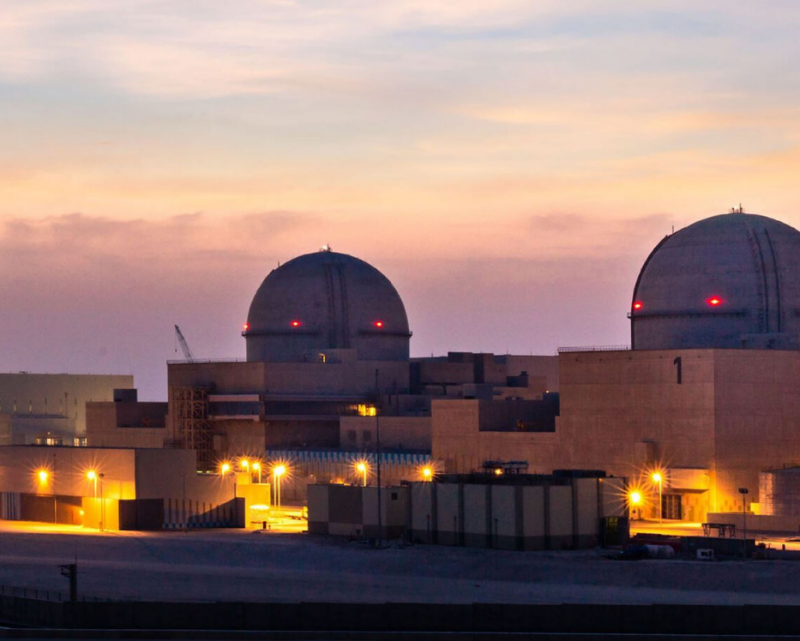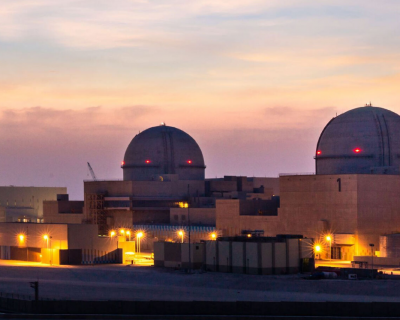The Emirates Nuclear Energy Corporation announced that its operating arm, Nawah Energy Company, has successfully connected the second Barakah peaceful nuclear energy plant to the main electricity grid in the UAE safely, following the start of operations of the second plant at the end of August. This resulted in the production of the first megawatt of carbon-free electricity from the second of four Barakah plants.
After the start of the second reactor on August 27, 2021, the Barakah plants became the first multi-reactor nuclear energy project to enter the operational phase in the Arab world, reflecting the advanced level of Emirati expertise in implementing local regulations and international standards, as well as the skills and experience of international teams led by Emirati competencies that achieved this significant milestone.
Barakah plants continue to present a model for new projects related to environmentally friendly energy worldwide, utilizing the knowledge and expertise developed by the operations team at the first Barakah plant. The connection of the second plant to the grid was made more effectively by reducing the time between the start of operations and connection to the grid by 10%, while simultaneously maintaining adherence to the highest standards of nuclear safety and operational excellence.
With the completion of the connection of the second Barakah plant to the electricity grid, work continues at the plant to add 1,400 megawatts of environmentally friendly energy to the state's electricity network. This achievement also contributes to the goals of the Emirates Nuclear Energy Corporation and its subsidiaries to supply up to a quarter of the state’s electricity needs with carbon-free electricity around the clock, while helping reduce carbon emissions, which are the primary cause of climate change.
The connection of the second plant to the grid is an important step in preparing for the commercial operation of the plant, during which the plant's generator was aligned with the requirements of the main electricity transmission network in the state. Following the completion of the connection to the grid, the operating team at the second Barakah plant will begin the gradual increase of reactor power levels, known as the "power ascension test." The systems of the plant are committed to operating according to the best global practices to ensure safe progress toward full electricity production. Upon completion of this process, the second plant will generate approximately 1,400 megawatts of baseload electricity.
All tests will be conducted under the continuous oversight of the Federal Authority for Nuclear Regulation, the independent body responsible for regulating nuclear activities in the UAE, which has conducted more than 335 inspections since the development of the Barakah plants, as well as over 42 review missions by the International Atomic Energy Agency and the World Association of Nuclear Operators.
The specialized teams at Nawah have closely collaborated with Abu Dhabi Transmission and Despatch Company (TRANSCO), a subsidiary of Abu Dhabi National Energy Company (TAQA), which constructed the overhead lines to connect the Barakah nuclear plants to the Abu Dhabi grid, ensuring safe delivery of the energy produced by Barakah plants to consumers throughout the state.
By supplying millions of homes and businesses with abundant and environmentally friendly electricity from the Barakah plants, the Emirates Nuclear Energy Corporation leads the largest efforts in the region to reduce carbon emissions, especially since the plants have now become the largest single source of carbon-free electricity in the UAE and the Arab world.
Located in the Al Dhafra region of Abu Dhabi, the Barakah plants are among the largest nuclear power plants in the world, consisting of four identical units, each featuring an advanced APR-1400 reactor design. Construction of the first plant began in 2012 and has progressed safely and steadily since then. The first plant generates thousands of megawatts of environmentally friendly electricity around the clock, while construction on the third and fourth plants has reached advanced stages with 95% and 91% completion, respectively, leveraging lessons learned from the first and second plants. Overall, more than 96% of the work on all four plants is complete, and once fully operational, the plants will generate up to 5,600 megawatts of carbon-free electricity for over 60 years.




